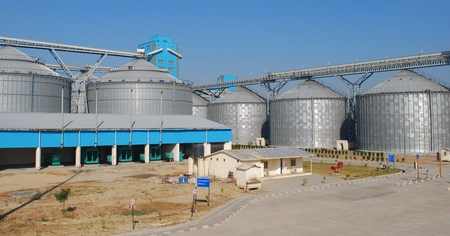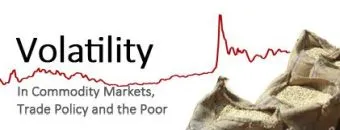India

The world’s largest democracy is a major producer of rice and wheat. The government has implemented large welfare policies to reduce poverty and hunger. These include a comprehensive public food distribution system (PDS) and guaranteed minimum procurement prices for producers of major food grains. The overall policy comprises of policies governing production, procurement, storage, distribution and trade of food grains. The widespread presence of the state resulted in the dual nature of the system – the simultaneous occurrence of public and private sectors with the former strongly influencing (often crowding out) the latter.
The policy of widespread government intervention in the food management of the country has been successful in many ways. From a food-scarce, food-importing country, India has emerged as a grain-surplus and a net grain-exporting country. The production base is strong and growing. Food security, in terms of ample grain supplies, has been attained at the national level.
The government’s official food subsidy bill has been rising steadily from less than 0.4% in the early 1990s to 0.8% of the GDP in 2008/09. Apart from this direct cost, there are additional costs that go unaccounted in the form of leakages, illegal diversion of food grains, and significant wastage due to poor storage and transport facilities (Saini and Kozicka 2014). Private storage has been swept out of the market by limits imposed by the government and additional crowding out by the colossal public stocks. The Indian government is also actively involved in regulating international trade, e.g. by imposing selective export bans and zero import duties, which fuels international food price volatility. In fact, this trade policy may also harm Indian farmers – the domestic price, especially of rice, has been often much lower than the international price, indicating a net taxation of Indian farmers and adding to the ‘bill’ the foregone benefits from trade. There is also an international pressure on India to reform its food sector due to its impacts on world market prices. Contribution of Indian export bans on rice and wheat to the world food price spikes during the 2007/2008 world food crisis received critique from the international community. Also the recent prorogation of implementation of the WTO Agreement on Agriculture (AoA), which limits support for farmers to 10% of the value of production, is only a temporary solution and indicates the inevitable change of the political paradigm to more market oriented approaches.
In India, there are also strong voices advocating for better management of stocks along with broader reforms to tame fiscal costs and slow down food inflation, more information [article 1] [article 2] [article 3] [article 4], as well as making use of comparative advantage of Indian agriculture to boost trade revenues and support farmers, more information [article 5].
The already generous public distribution system has been recently expanded through the National Food Security Act (NFSA). The Act makes a certain amount of food a legal entitlement for 67 per cent of the Indian population. The NFSA has been widely debated and received quite a lot of critique (Gulati and Saini 2014a, more information [article 6]).
Despite the large commitment, India remains home to a large number of undernourished people – 217 million people according to FAO estimates were undernourished in 2010-2012. Therefore, our work on India will focus on how alternative trade and storage policies affect domestic and international prices and what the optimal public involvement in markets could be.
Publications
- Kozicka, M., M. Kalkuhl & J. Brockhaus (2017). Food Grain Policies in India and their Implications for Stocks and Fiscal Costs: A Dynamic Partial Equilibrium Analysis. Journal of Agricultural Economics, 68(1), 98–122.
- Kozicka, M. (2016). Policies for Food Security in India: An Assessment of Current Policies and Reform Options. Ph.D. Thesis. University of Bonn, Bonn.
- Gulati, A. & S. Saini (2015). Leakages from Public Distribution System (PDS) and the Way Forward. ICRIER Working Paper No. 294 [PDF]
- Kozicka, M., M. Kalkuhl, S. Saini & J. Brockhaus (2015). (2015). Modelling Indian Wheat and Rice Sector Policies. ZEF Discussion Paper on Development Policy No. 197 [PDF]
- Gulati, A. & S. Saini (2014a). The National Food Security Act: Challenges and Options, Chapter 13 in U. Kapila (ed.), Indian Economy since Independence. 25th Edition. New Delhi: Academic Foundation [PDF]
- Gulati, A. & S. Saini (2014b). Food Inflation in India: Diagnosis and Remedies, Chapter 15 in U. Kapila (ed.), Indian Economy since Independence. 25th Edition. New Delhi: Academic Foundation [PDF]
- Saini, S. & M. Kozicka (2014). Evolution and Critique of Buffer Stocking Policy of India. ICRIER Working Paper No. 283 [PDF]
- Saini, S. & A. Gulati (2014). El Niño and Indian Droughts - A Scoping Exercise. ICRIER Working Paper No. 276 [PDF]
- Gulati, A., S. Saini & S. Jain (2013). Monsoon 2013: Estimating the Impact on Agriculture. ICRIER Working Paper No. 269 [PDF]



